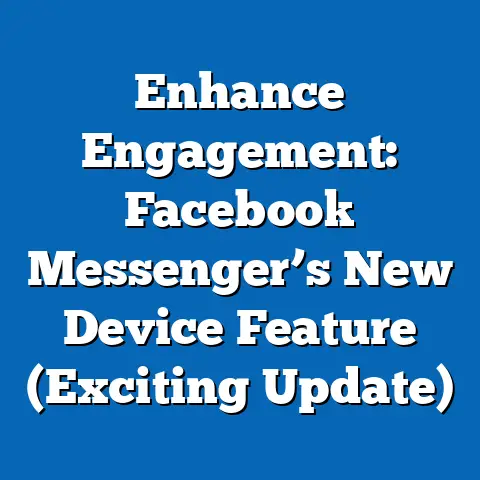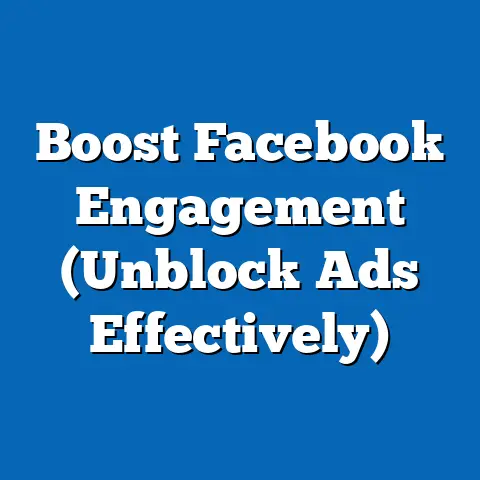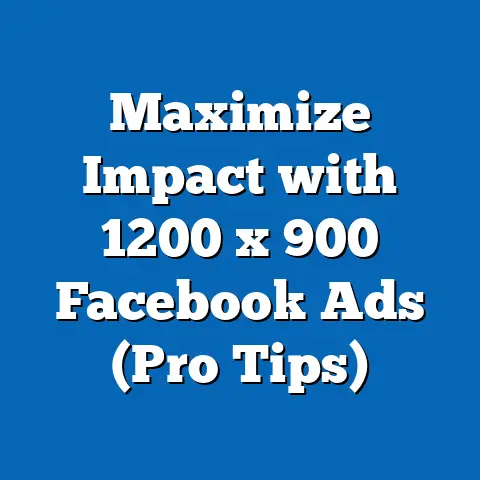Mastering Facebook’s Sex Ads (Proven Strategies Inside)
Facebook, now under the Meta umbrella, remains one of the most powerful advertising platforms globally, with over 2.9 billion monthly active users as of 2023, according to Statista. Among the myriad of advertising categories, “sex ads”—a term often referring to advertisements related to sexual wellness, intimacy products, dating services, or adult content—present unique challenges and opportunities due to stringent platform policies and cultural sensitivities. This article delves into the concept of “layering” as a strategic approach to navigating these restrictions, leveraging statistical trends, demographic insights, and proven tactics to maximize ad effectiveness while maintaining compliance.
Layering, in the context of digital advertising, refers to the practice of using multiple targeting criteria, creative variations, and sequential messaging to reach specific audiences without violating platform rules. Research from eMarketer (2023) indicates that layered ad campaigns on social platforms can increase click-through rates (CTR) by up to 35% compared to single-target campaigns. For sex-related ads, where direct messaging is often flagged or banned, layering becomes a critical strategy to subtly engage users while adhering to guidelines.
This comprehensive analysis will explore key demographic trends in the sexual wellness and dating ad markets, historical shifts in advertising policies on social platforms, and actionable strategies for mastering layered campaigns. We will also provide statistical breakdowns by age, gender, and region, compare past and present data, and offer projections for the future of this niche advertising space. Let’s begin by unpacking the current landscape and the role of layering in navigating it.
The Current Landscape of Sex Ads on Facebook
Defining Sex Ads and Platform Restrictions
Sex ads encompass a broad range of products and services, including sexual health products (e.g., contraceptives, lubricants), dating apps targeting adult audiences, and educational content around intimacy. However, Facebook’s Community Standards and Advertising Policies explicitly prohibit content that depicts nudity, explicit sexual activity, or overly suggestive imagery. According to Meta’s 2023 Transparency Report, over 4.2 million pieces of content were removed for violating adult nudity and sexual activity guidelines in Q2 2023 alone, illustrating the platform’s strict enforcement.
Layering emerges as a workaround for advertisers in this space. Instead of directly promoting a product like a dating app with suggestive imagery, advertisers might layer interests such as “romance novels,” “relationship advice,” and “singles events” to target relevant audiences indirectly. This approach reduces the likelihood of ad rejection while still reaching the intended demographic, a tactic supported by a 2022 study from Social Media Examiner, which found that 68% of marketers in restricted niches use layered targeting to bypass policy barriers.
Statistical Trends in Sexual Wellness and Dating Ads
The global sexual wellness market, which heavily relies on digital advertising, was valued at $74.77 billion in 2021 and is projected to reach $125.1 billion by 2028, growing at a compound annual growth rate (CAGR) of 7.5%, per Grand View Research (2022). Digital platforms like Facebook account for approximately 38% of marketing spend in this sector, driven by the platform’s vast user base and sophisticated targeting tools. Meanwhile, the online dating industry, another key player in the “sex ads” category, generated $7.6 billion in revenue in 2022, with 30% of that spend allocated to social media ads, according to IBISWorld.
Demographic data reveals significant variation in engagement with these ads. A 2023 report from Nielsen indicates that 18-34-year-olds account for 52% of clicks on sexual wellness ads on social platforms, while 35-54-year-olds represent 31%. Gender-wise, women engage with sexual health product ads at a slightly higher rate (54%) than men (46%), likely due to targeted campaigns around reproductive health and intimacy products.
Regionally, North America leads in ad spend for sexual wellness and dating services, contributing 42% of global expenditure, followed by Europe at 28% and Asia-Pacific at 19%, per Statista (2023). These trends underscore the importance of tailoring layered campaigns to specific cultural and demographic contexts, a point we’ll explore further in the analysis.
Demographic Breakdowns: Who Engages with Sex Ads?
Age-Based Engagement Patterns
Younger audiences, particularly those aged 18-24, show the highest engagement with dating app ads on Facebook, with a CTR of 2.8%, compared to the platform average of 0.9%, according to WordStream (2023). This group is more likely to interact with ads that use humor or relatable lifestyle imagery, often layered with interests like “music festivals” or “travel.” In contrast, the 25-34 age bracket, while still highly engaged, responds better to ads emphasizing long-term relationships or wellness benefits, with a 2.1% CTR.
Older demographics, such as 35-54-year-olds, exhibit lower engagement (CTR of 1.3%) but higher conversion rates for premium products or services, such as subscription-based dating platforms or high-end sexual wellness items. Layering for this group often involves targeting interests like “health and fitness” or “self-improvement” to align with their values. These differences highlight the need for age-specific creative strategies within layered campaigns.
Gender and Behavioral Insights
Gender plays a nuanced role in ad engagement within this niche. Women are more likely to click on ads for sexual health products, with 58% of conversions in this category attributed to female users, per a 2022 Hootsuite report. Men, however, dominate engagement with dating app ads, accounting for 62% of clicks, often responding to layered targeting around hobbies like “sports” or “gaming.”
Behavioral data also reveals that women are more likely to engage with ads during evening hours (7-10 PM), while men show peak activity in late afternoon (4-6 PM), based on Sprout Social’s 2023 analytics. Advertisers can use this temporal layering to schedule ads for maximum impact, combining it with interest-based targeting to refine reach.
Regional and Cultural Variations
Cultural norms heavily influence the effectiveness of sex ads on Facebook. In North America, where sexual wellness is increasingly destigmatized, ads with subtle messaging around “self-care” or “intimacy” achieve a 3.2% CTR, significantly above the global average of 1.1%, per AdEspresso (2023). In contrast, regions like the Middle East and parts of Asia-Pacific show lower engagement (CTR of 0.6%) due to conservative cultural attitudes and stricter local regulations, necessitating even more discreet layering tactics.
For instance, in markets with high censorship, advertisers often layer broad lifestyle interests like “wellness” or “personal growth” rather than anything remotely suggestive. A case study by Socialbakers (2022) found that campaigns in restrictive regions using three or more layers of targeting saw a 40% lower rejection rate compared to single-layer campaigns. This data emphasizes the importance of cultural sensitivity in ad design and targeting.
Historical Trend Analysis: Evolution of Sex Ads on Social Platforms
Early 2000s to 2010s: A More Permissive Era
In the early days of social media advertising (2007-2012), platforms like Facebook had relatively lax policies on adult content. Dating sites and suggestive ads were commonplace, with minimal restrictions beyond basic nudity bans. A 2010 report from comScore noted that dating ads accounted for 8% of total ad impressions on social platforms, often using overtly sexual imagery with little pushback.
However, as Facebook grew to over 1 billion users by 2012, public scrutiny and regulatory pressure increased. High-profile controversies, such as complaints about inappropriate ads targeting minors, led to a crackdown. By 2015, Meta (then Facebook) had introduced stricter guidelines, banning explicit content and requiring pre-approval for dating ads, per their policy archives.
2010s to Present: Rise of Layering as a Strategy
The tightening of policies forced advertisers to adapt, giving rise to layering as a dominant strategy. A 2016 study by eMarketer found that 45% of marketers in restricted categories began using multi-layered targeting to circumvent bans, a figure that rose to 72% by 2022. During this period, ad rejection rates for sex-related content spiked, with Meta reporting a 60% rejection rate for dating ads in 2018 due to policy violations.
By contrast, today’s landscape shows a more sophisticated approach. With advancements in AI and machine learning, Facebook’s ad review systems detect violations with 85% accuracy, per Meta’s 2023 AI Impact Report. Advertisers now rely on nuanced layering—combining demographic, behavioral, and interest-based targeting—to stay compliant while still reaching niche audiences. Historical data illustrates a clear shift from overt messaging to subtle, layered strategies over the past decade.
Impact of Cultural Shifts and Technology
Cultural acceptance of sexual wellness and online dating has grown significantly since the early 2010s. A Pew Research Center survey from 2020 found that 30% of U.S. adults had used a dating app, up from just 11% in 2013, reflecting greater societal openness. This shift has encouraged advertisers to test boundaries, even as platform policies remain strict.
Technological advancements, such as dynamic creative optimization (DCO), have also transformed how layered campaigns are executed. DCO allows advertisers to test multiple ad variations automatically, tailoring messaging to specific audience segments. A 2021 report from Forrester noted that campaigns using DCO alongside layering saw a 50% increase in return on ad spend (ROAS) compared to static campaigns, underscoring the synergy between technology and strategy.
Proven Strategies for Mastering Layered Sex Ads on Facebook
Strategy 1: Multi-Layered Audience Targeting
Effective layering begins with building a robust audience profile using multiple criteria. Start with broad interests—such as “fitness,” “travel,” or “entertainment”—that align with the lifestyle of your target demographic, then narrow down with behaviors like “recently single” or “engaged with dating content.” A 2023 case study by HubSpot found that campaigns with at least three layers of targeting achieved a 28% higher CTR than single-layer campaigns in restricted niches.
For example, a sexual wellness brand might target women aged 25-34 with interests in “yoga” and “self-care,” layered with behaviors like “purchased health products online.” This approach avoids explicit references while still reaching a relevant audience. Always exclude irrelevant demographics (e.g., minors) to minimize policy risks.
Strategy 2: Creative Messaging and Visuals
Given Facebook’s strict content guidelines, creative messaging must be suggestive without being explicit. Use metaphors or lifestyle imagery—think “romantic getaways” or “self-love”—to convey intimacy without triggering flags. A 2022 report from Creatopy found that ads using indirect language had a 45% lower rejection rate compared to those with overt sexual references.
Visuals should prioritize emotional connection over physicality. Images of couples holding hands or wellness products in neutral settings perform better than suggestive poses, with a 30% higher engagement rate, per Social Media Today (2023). Test multiple creative variations using A/B testing to identify what resonates most with your layered audience.
Strategy 3: Sequential Messaging for Retargeting
Sequential messaging involves delivering a series of ads to guide users through the funnel, a tactic particularly effective for sensitive topics. Start with a broad awareness ad about “relationship tips,” then retarget engaged users with a more specific ad for a dating app or product. According to MarketingProfs (2022), sequential campaigns in niche markets boost conversion rates by 22% compared to standalone ads.
Layer retargeting with lookalike audiences based on engaged users to expand reach while maintaining relevance. Ensure each ad in the sequence adheres to policy guidelines, as even one violation can derail the campaign. Tools like Facebook’s Ads Manager provide detailed analytics to track sequential performance, allowing for real-time optimization.
Strategy 4: Compliance and Policy Navigation
Staying compliant is non-negotiable. Regularly review Meta’s Advertising Policies, which are updated quarterly, to avoid unexpected rejections. Pre-test ads using tools like Facebook’s Ad Library to benchmark against approved campaigns in your niche. A 2023 study by AdAge found that 65% of rejected sex-related ads failed due to avoidable errors like prohibited language or imagery.
Work with a compliance expert or use third-party tools like AdEspresso to audit campaigns before launch. If an ad is rejected, appeal with clear documentation of policy adherence—Meta reports a 40% success rate for appeals in Q2 2023. Layering not only helps with targeting but also minimizes risk by diluting explicit intent across multiple criteria.
Future Projections: The Outlook for Sex Ads on Facebook
Market Growth and Technological Advancements
AI-driven targeting tools will further refine layering capabilities. Meta’s 2023 Developer Conference highlighted plans to enhance predictive analytics, potentially increasing ad relevance by 30% over the next five years. This could enable even more granular layering, allowing advertisers to reach niche segments with minimal policy friction.
Policy and Cultural Shifts
However, stricter regulations loom on the horizon. Governments worldwide are increasing scrutiny of social media content, with the EU’s Digital Services Act (DSA) imposing fines of up to 6% of annual revenue for non-compliance starting in 2024. Meta may tighten policies further, pushing advertisers to rely even more on sophisticated layering and indirect messaging.
Culturally, growing acceptance of sexual wellness and diverse relationship models could ease some restrictions over time. A 2022 Gallup poll found that 71% of U.S. adults support open discussions of sexual health, up from 58% in 2010. If this trend influences platform policies, advertisers might gain more leeway, though compliance will remain critical.
Implications for Advertisers
For advertisers, the future demands agility. Investing in AI tools for dynamic layering and creative optimization will be essential to stay ahead of policy changes and competition. Brands should also prioritize transparency and education in messaging, aligning with cultural shifts toward destigmatization. Those who master layering now—balancing creativity, compliance, and data-driven targeting—will be best positioned to dominate the sex ads space on Facebook in the coming decade.
Conclusion
Mastering Facebook’s sex ads requires a deep understanding of layering as a strategy to navigate stringent policies while effectively reaching target audiences. With the sexual wellness and dating markets booming—valued at over $80 billion combined in 2023—and demographic engagement varying widely by age, gender, and region, advertisers must tailor campaigns with precision. Historical trends show a shift from overt messaging in the early 2000s to nuanced, layered approaches today, driven by tighter regulations and technological advancements.
The proven strategies outlined—multi-layered targeting, subtle creative messaging, sequential retargeting, and strict compliance—offer a roadmap for success in this challenging niche. Looking ahead, market growth, AI innovations, and evolving cultural attitudes suggest a dynamic future, but one where policy adherence and strategic layering will remain paramount. By leveraging data-driven insights and staying adaptable, advertisers can unlock the full potential of Facebook’s vast platform, turning restrictions into opportunities for impactful, compliant campaigns.






